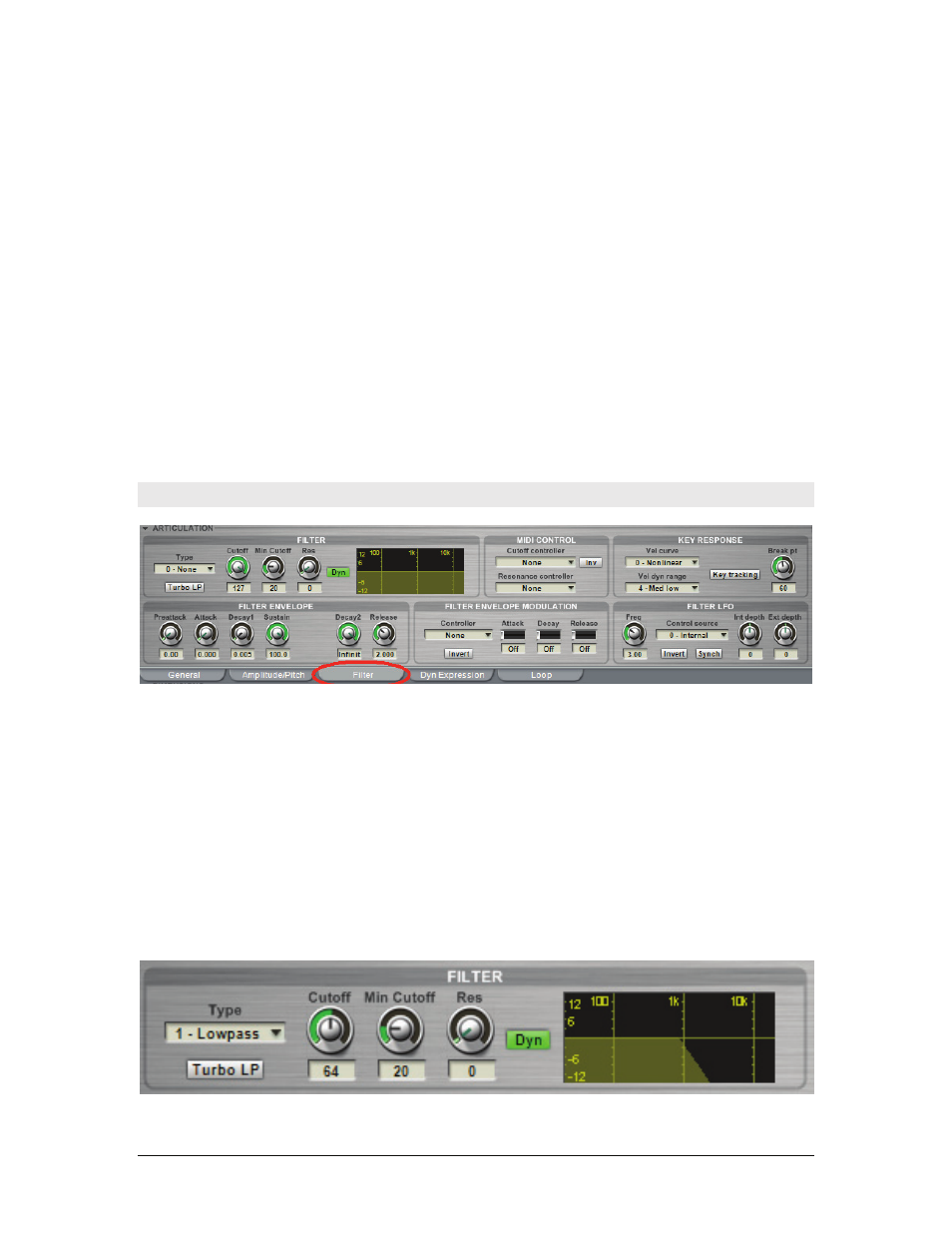Articulation section: filter tab – Teac GigaStudio 4 User Manual
Page 95

GigaStudio 4 Reference Manual
95
Internal Depth (-1200 to 1200)
This determines the amount of LFO modulation when Internal is selected as a control source. The maximum
amount of pitch change is plus and minus 1200 cents, or one octave above and below the initial pitch. Negative
values and positive values give the same audible effect, but with multiple layers or instruments, you might
want to have one sound increasing in pitch while another sound decreases in pitch, in a complementary way.
External Depth (-1200 to 1200)
This determines the amount of LFO modulation that’s applied when Mod Wheel or Breath Control is selected
as a control source. Negative values and positive values work as described previously.
Invert (on/off)
Turning this on is the equivalent to changing the Depth parameters from a positive value to the equivalent
negative value, or vice-versa.
Synch (on/off)
When on, all LFOs start from the same starting point. When off, all LFOs are free-running.
Articulation Section: Filter Tab
Filters shape a sound’s timbre by reducing and/or boosting the amplitude of specific frequency ranges. An
instrument can sound duller, brighter, thinner, fatter, etc. through the use of filtering.
For sound design and creative effects, filter parameters can be modulated by various control sources such as
velocity, aftertouch, continuous controllers, envelopes, and more.
Filter Section
This section determines the static filter characteristics to which modulation can be added.
Type
GigaStudio 4 offers four filter types. The graph toward the right provides a graphic representation of the filter
frequency response.